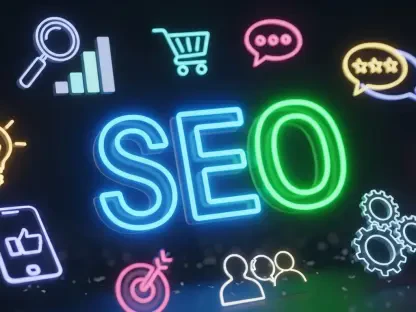As we dive into the dynamic world of digital advertising, I’m thrilled to sit down with Anastasia Braitsik, a global leader in SEO, content marketing, and data analytics. With her extensive expertise, Anastasia has helped countless brands navigate the complexities of online media and harness the power of data to drive impactful campaigns. Today, we’ll explore the pivotal role of data analytics in modern advertising, the transformative potential of predictive models, the importance of personalization, and the risks of clinging to outdated strategies. Join us for an insightful conversation that unpacks how data is reshaping the way brands connect with consumers.
How did your journey in digital marketing and data analytics begin, and what has shaped your approach to the field?
My journey started with a fascination for how digital platforms could connect brands with audiences in real time. Early on, I worked on SEO and content strategies, but I quickly realized that data was the key to unlocking true potential. Over the years, I’ve seen the industry evolve from gut-driven decisions to data-informed strategies. My approach has been shaped by a commitment to understanding consumer behavior through numbers, paired with a creative mindset to craft messages that resonate. Every campaign I’ve worked on has taught me something new about balancing analytics with human insight.
What sparked your passion for integrating data analytics into advertising strategies?
I’ve always believed that advertising should be about relevance, not guesswork. Data analytics became my focus when I saw how much more effective campaigns could be when grounded in real insights. Early in my career, I noticed that brands often struggled to understand who they were reaching. Analytics offered a way to bridge that gap, turning vague demographics into clear audience profiles. It’s incredibly rewarding to see a campaign succeed because it’s built on a foundation of data that reveals what people truly want.
Why do you think data analytics has become indispensable in today’s advertising landscape?
The advertising world today is more competitive than ever, and consumers are bombarded with messages across countless channels. Data analytics cuts through the noise by helping brands identify exactly who to target and how to engage them. It’s no longer enough to cast a wide net—consumers expect tailored experiences. Analytics provides the roadmap to meet those expectations, whether it’s through understanding purchase habits or spotting emerging trends. Without it, brands are essentially flying blind in a very crowded sky.
Can you elaborate on how shifts in consumer behavior have amplified the need for data-driven approaches?
Consumer behavior has changed dramatically with the rise of digital platforms. People now interact with brands across multiple touchpoints—social media, apps, websites—and their preferences can shift overnight. Data-driven approaches allow us to track these changes in real time, whether it’s a spike in mobile shopping or a new viral trend. For instance, during the pandemic, we saw huge jumps in online purchasing, and brands that adapted quickly using data insights gained a massive edge. It’s all about staying agile, and data is what keeps you in step with consumers.
What are some of the biggest hurdles advertisers face when trying to adapt to evolving consumer preferences?
One major hurdle is the sheer speed of change—trends can emerge and fade before a campaign even launches. Another challenge is data overload; with so much information available, it’s easy to get paralyzed or focus on the wrong metrics. There’s also the issue of privacy regulations, which limit how much data you can collect and use. Advertisers often struggle to balance personalization with compliance, and failing to do so can erode trust. It’s a tightrope walk that requires constant vigilance and the right tools to interpret data effectively.
You’ve noted that raw data can sometimes be more of a burden than a benefit. Can you unpack what you mean by that?
Raw data, without proper analysis, is just a pile of numbers and noise. It’s overwhelming and often lacks context. For example, knowing that a website had a million views is meaningless if you don’t know who those viewers were, what they did next, or why they visited. Without turning that data into insights—through segmentation or trend analysis—it can lead to misguided decisions. I’ve seen brands waste budgets chasing meaningless metrics because they didn’t refine their data into something actionable. It’s not about having data; it’s about knowing what to do with it.
How can advertisers transform raw data into insights that truly drive campaign success?
The key is to start with clear objectives—what are you trying to achieve? Then, use tools to segment and filter the data, focusing on metrics that align with your goals, like engagement rates or conversion paths. Visualization tools can help spot patterns, while A/B testing lets you validate assumptions. Collaboration is also crucial; data scientists and creative teams should work together to ensure insights translate into compelling campaigns. Ultimately, it’s about asking the right questions of your data and being willing to iterate based on the answers.
In what ways does predictive analytics stand out from traditional data analysis in advertising?
Traditional data analysis often looks backward, examining what happened and why. Predictive analytics, on the other hand, looks forward, using historical data and machine learning to forecast future behaviors or trends. In advertising, this means anticipating what consumers might do next—whether they’re likely to buy, churn, or engage with a specific ad. It shifts the focus from reaction to proaction, allowing brands to stay ahead of the curve. It’s a game-changer because it’s not just about understanding the past; it’s about shaping the future.
Can you share a memorable instance where predictive analytics made a significant impact on a campaign?
Absolutely. I worked with a retail brand that was struggling to retain customers during seasonal dips. Using predictive analytics, we identified patterns in past shopping behaviors and flagged customers at risk of dropping off. We then crafted targeted email campaigns with personalized offers based on their predicted interests. The result was a 25% increase in repeat purchases during a typically slow period. It showed me how powerful it is to not just react to data, but to use it to anticipate needs and build stronger connections.
Why is personalizing ad messages so vital in today’s market, and how does data play a role in that?
Personalization is vital because consumers now expect brands to understand them as individuals, not as a faceless mass. Generic ads often get ignored, while personalized ones—think tailored product recommendations or location-based offers—grab attention and build loyalty. Data is the backbone of this process; it tells us what someone likes, where they are, and how they interact with content. By analyzing these details, we can create messages that feel relevant and timely, which is often the difference between a click and a scroll-past.
What advice do you have for our readers who are looking to leverage data analytics in their own marketing efforts?
My biggest piece of advice is to start small but think big. Don’t try to tackle every data point at once—focus on a specific goal, like improving email open rates or understanding customer drop-off. Invest in user-friendly analytics tools and prioritize learning how to interpret the data over just collecting it. Surround yourself with a team that complements your skills, whether that’s data experts or creative minds. And finally, never stop testing and adapting; the digital landscape changes fast, and data is your best guide to keeping up.









